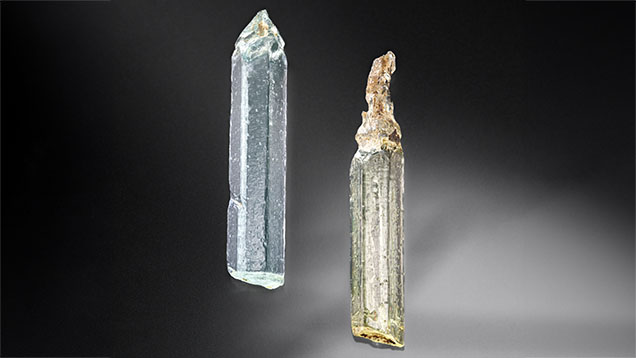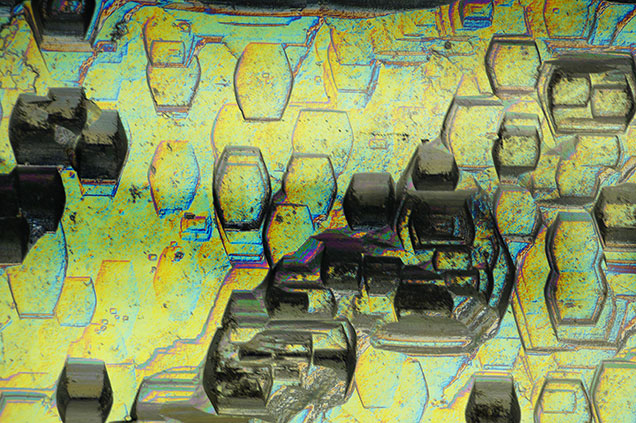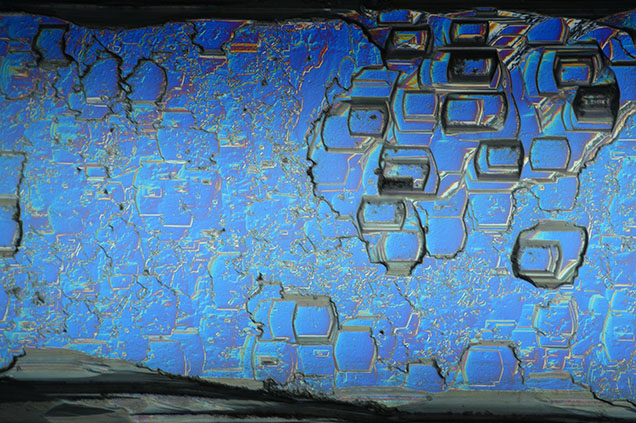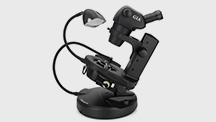Heliodor and Aquamarine with Surface Etching

During an ongoing beryl characterization project, aquamarine and heliodor beryl samples from the GIA Museum collection (figure 1) revealed distinctive etch features on each of their crystal faces. These two samples were reported by the donor as being from China.


The etch pits seen on these samples are markedly different from those of Ukrainian heliodor (G. Franz et al., “Etch pits in heliodor and green beryl from the Volyn pegmatites, northwest Ukraine: A diagnostic feature,” Fall 2023 G&G, pp. 324–339). While Ukrainian heliodor exhibits a more rectangular etching, these specimens have rounded six-sided shapes akin to a compressed hexagon adorning their prismatic faces (figure 2). The six-sided deeper etch features are sometimes superimposed upon irregularly shaped etch features, or have ragged edges, and these are displayed more prominently on the aquamarine sample (figure 3) than on the heliodor. In both samples, the six-sided shapes are superimposed on each other in some cases, creating deep grooves within the crystal. Some etch shapes exhibit a line separating regions, which runs parallel to the c-axis of the crystal. The etch pits are detectable to the eye but require a microscope to see the compressed hexagons in detail.



